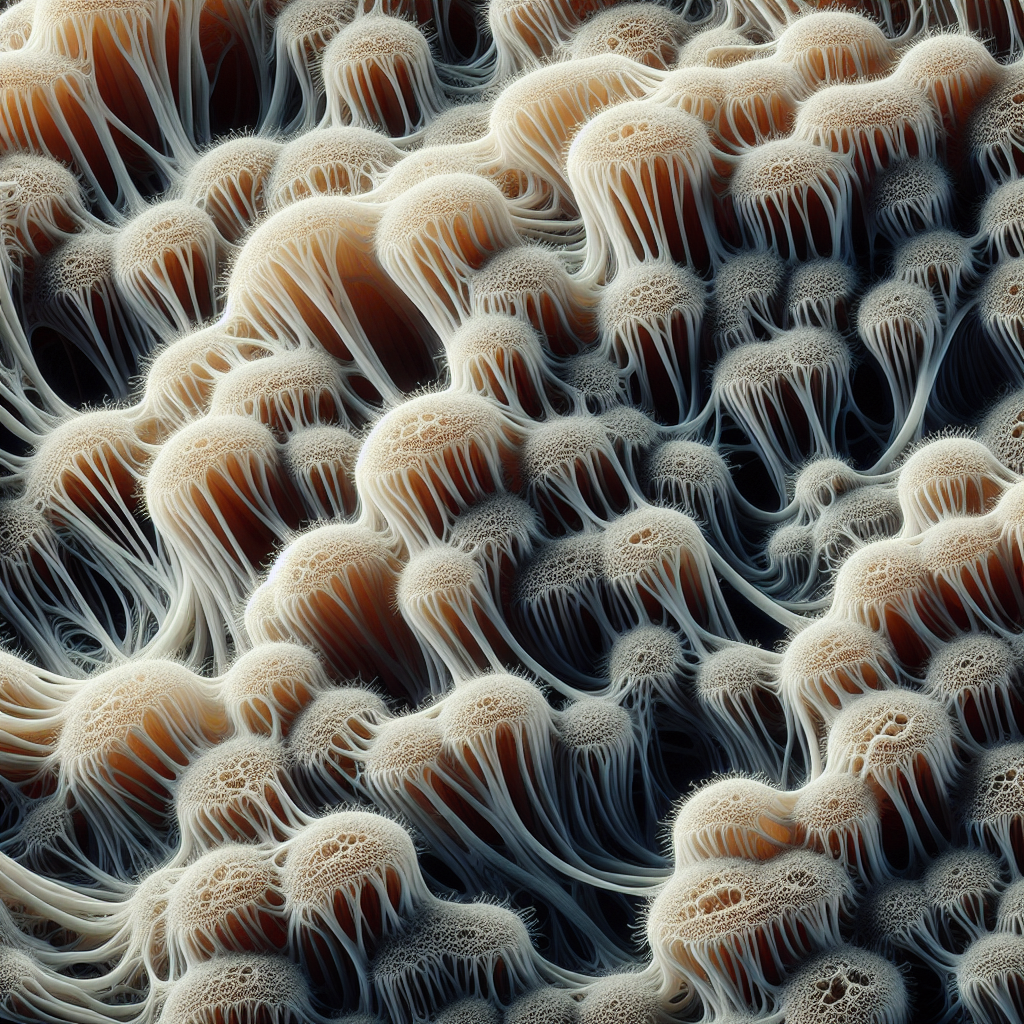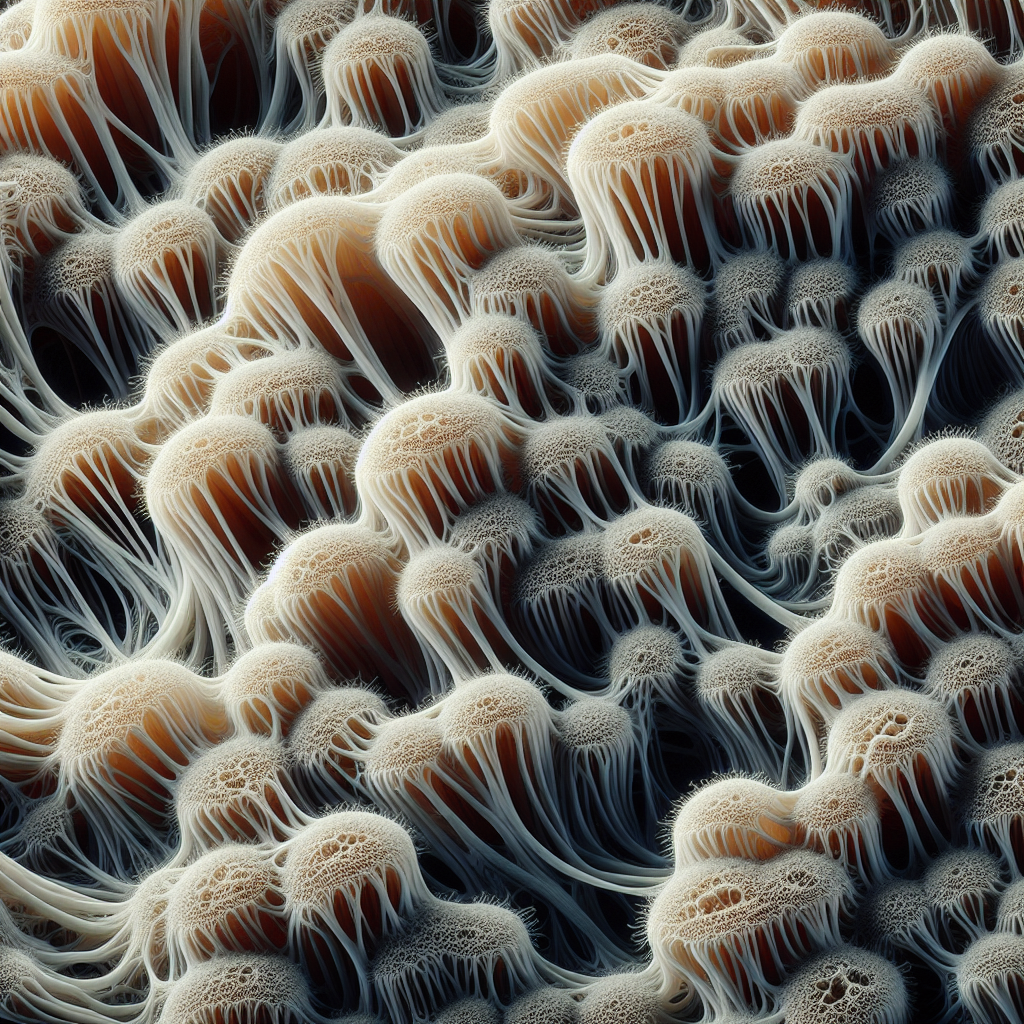In “The Mycelium Grain: A Comprehensive Study”, you will journey through the fascinating world of mycology, focusing specifically on the core subject of mycelium grain. This comprehensive guide presents an in-depth look at its biology, life cycle, and its significant role in environmental sustainability. Deriving its importance from the foundation of ecosystems, your understanding of mycelium grain will be significantly enhanced, enriching your perception of its vital connection not just in the realm of mycology but its contribution to the broader world as well.

Understanding Mycelium Grain
Basic Definition of Mycelium Grain
The world of microorganisms is vast and diverse, filled with numerous species that contribute to our daily lives in more ways than we realize. One such microorganism is the fungus, and integral to its structure is what we call the mycelium. Mycelium consists of a network of filamentous structures termed hyphae, which collectively form the vegetative part of a fungus. The mycelium grain is a bag of these tiny mycelium strands. It is used as the basic building block from which larger mycelium structures can grow.
Why Mycelium Grain is Important
The mycelium grain holds great importance not only in the biological realm but also in various industrial applications. In biology, it plays a crucial role in the growth and reproduction of fungi. Beyond its biological significance, the mycelium grain is acknowledged for its vital contribution to environmental and industrial matrices, including its use in textile and building industries, its role in mitigating climate change impacts, its potential in medical research, and its applications in agriculture.
Role of Mycelium in Fungi Growth
In the life cycle of a fungus, the mycelium performs vital functions. It serves as the primary site for nutrient absorption from the environment, enabling the fungus to grow and develop. Additionally, it supports reproduction by producing reproductive structures that facilitate the propagation of the species. Mycelium is much like the root system of a plant, absorbing nutrients and water necessary for growth while also providing a foundation for the fungi.
Biology and Structure of Mycelium
Genetic Material of Mycelium
The genetic material of mycelium, like other types of fungi, is stored within cells that make up the hyphae. Each cell possesses a nucleus containing DNA, which carries the genetic information necessary for the growth, development, and reproduction of the fungus.
Physical Appearance and Properties of Mycelium Grain
The mycelium grain has a compact, white, and thread-like appearance, often compared to the roots of a plant. The physical properties of the mycelium grain are determined by its unique composition, which includes water, carbohydrates, lipids, proteins, and various minerals. Its structure gives the mycelium grain a firm yet flexible texture that contributes to its functionality in various applications.
Variations in Mycelium Grain Structures
Different species of fungi may exhibit variations in the structure of their mycelium. Some may develop into an extensive network of intertwined hyphae, while others may have less dense and more branched structures. These variations may influence various aspects of the fungus life cycle, from growth patterns and nutrient absorption capabilities to reproductive behavior.
Growth and Development of Mycelium Grain
Ideal Conditions for Mycelium Grain Growth
Mycelium grains, like other fungi, prefer moisture-rich environments and favorable temperatures for growth and proliferation. They also require a suitable substrate, such as wood or organic matter, from which to derive nutrients.
Factors Affecting the Development of Mycelium Grain
Several factors affect the development of mycelium grain, including environmental conditions and the availability of nutrients. For example, extreme temperatures or pH levels might hinder growth, while a lack of essential nutrients could result in inadequate development. Understanding these factors is crucial for optimizing the quality and yield of mycelium grain.
Stages of Mycelium Grain Growth
The growth of mycelium grain typically occurs in three stages: germination, vegetative growth, and maturation. During germination, the mycelium grain begins to sprout after exposure to ideal conditions. This is followed by the vegetative growth stage, where the mycelium expands into a network of hyphae, actively absorbing nutrients. The final maturation stage involves the formation of reproductive structures needed for the fungus to reproduce and propagate.

Role of Mycelium Grain in Nature
Mycelium as a Nutrient Recycler
In nature, mycelium has a crucial role as a nutrient recycler. It breaks down dead or decaying organic material into simpler compounds, thereby returning essential nutrients to the soil. This process helps maintain soil fertility and contributes to the natural process of nutrient cycling in ecosystems.
Mycelium in Soil Health
Apart from nutrient cycling, mycelium also contributes to soil health by improving its structure. Through the dense networks of hyphae, mycelium can bind soil particles together, improving soil stability and preventing erosion.
Influence of Mycelium on Ecosystems
Mycelium’s influence on ecosystems extends well beyond nutrient recycling and soil health. It also has crucial roles in maintaining biodiversity and promoting plant health. Mycelium forms symbiotic relationships with various plants, aiding their nutrient absorption and offering protection against pathogens.
Mycelium Grain in Industrial Applications
Mycelium in Textile Industry
In the textile industry, mycelium grain has been recognized as a sustainable material source. Mycelium-based textiles are biodegradable, reducing the environmental impact associated with traditional textile production and disposal.
Mycelium as Building Material
Similarly, mycelium grain is also making waves in the construction industry as an eco-friendly building material. Mycelium-based products have impressive insulation properties and structural strength, making them a viable alternative to traditional synthetic materials.
Use of Mycelium in Packaging Industry
Mycelium grain is also used in the packaging industry to produce biodegradable packaging materials. It offers a sustainable solution to the global issue of plastic waste, as mycelium-based packaging can decompose naturally without leaving toxic residues.
Role of Mycelium in Climate Change Mitigation
Carbon Sequestration Potential of Mycelium Grain
Another key role of mycelium grain is its potential in mitigating climate change. As a natural carbon sequestration agent, mycelium can absorb and store substantial amounts of carbon from the atmosphere, thereby reducing greenhouse gas emissions.
Mycelium in Reducing Greenhouse Gas Emissions
Beyond carbon sequestration, mycelium grain also aids in reducing GHG emissions by serving as an alternative to fossil fuel-based products. The use of mycelium in industries such as textile, construction, and packaging can help shift our reliance from carbon-intensive industries to more sustainable bio-based alternatives.
Resilience of Mycelium to Changing Climate Conditions
Mycelium grain’s resilience to changing climate conditions further fortifies its role in climate change mitigation. Mycelium can thrive in varied conditions, making it an adaptable solution for environments affected by climate change.
Mycelium Grain in Medical Research
Antibiotic Properties of Mycelium Grain
Medical research has highlighted the antibiotic properties of mycelium grain. Certain fungi produce compounds that have antimicrobial activity, which can be harnessed to develop new antibiotic drugs.
Use of Mycelium Grain in Cancer Research
There is also burgeoning interest in the use of mycelium grain in cancer research. Some fungal species are believed to produce compounds that exhibit anti-cancer properties, making mycelium a potential resource for novel cancer treatments.
Mycelium as a Source of Novel Medicines
With its rich diversity of bioactive compounds, mycelium grain could be a valuable source of novel medicines. Research in this area could pave the way for the discovery of unique therapeutic agents to treat a range of diseases.
Role of Mycelium Grain in Agriculture
Mycelium as a Biofertilizer
In agriculture, mycelium grain is harnessed for its biofertilizer potential. It promotes plant growth by enriching the soil with nutrients and boosting plants’ nutrient uptake capabilities.
Improvement of Soil Quality Using Mycelium Grain
The use of mycelium in agriculture can also help improve soil quality over time. By contributing to soil structure and nutrient content, mycelium grain can enhance the growth environment for plants, leading to healthier, more productive crops.
Crop Protection Role of Mycelium
The mycelium’s protective role against pathogens is also beneficial in agriculture wherein it aids to safeguard crops from plant diseases. This natural defense mechanism has the potential to minimize the use of chemical pesticides, reducing environmental impacts and promoting sustainable farming practices.
Cultivation and Production of Mycelium Grain
Techniques for Mycelium Cultivation
Cultivating mycelium grain involves a meticulous process. It typically begins with inoculation where mycelium is introduced into a substrate, followed by incubation under controlled conditions to facilitate growth. The matured mycelium grain is then harvested, dried, and stored for use.
Scaling Mycelium Grain Production
Scaling mycelium grain production requires careful optimization of growth conditions and efficient harvesting methods. Challenges may arise, including the risk of contamination, the need for a steady supply of suitable substrates, and maintaining consistency in production.
Challenges in Mycelium Grain Production
Like any other form of cultivation, the production of mycelium grain comes with its share of challenges. These include ensuring the quality control in the production process, minimizing the possibility of contamination, and maintaining the viability of the mycelium during storage and transportation.
Future Perspectives of Mycelium Grain
Potential Innovations in Mycelium Grain Applications
The future is certainly bright for mycelium grain, with the potential for new innovations in numerous spheres. Whether it’s developing advanced bio-based materials, uncovering novel medical treatments, or revolutionizing sustainable farming, the potential applications of mycelium grain are vast and varied.
Research Trends in Mycelium Grain
Research in the field of mycelium grain is continually expanding. Current trends include exploring its applications in biotechnology, nanotechnology, and bioremediation among others. This research is powered by increasing recognition of mycelium grain’s multifunctionality and the need for sustainable alternatives in various disciplines.
Ethical and Regulatory Considerations for Mycelium Grain Use
As with all technologies, ethical and regulatory considerations will play a crucial role in mycelium grain use. Developing norms and regulations will be necessary to ensure its safe and beneficial use, particularly as the scope of its applications continues to expand.
In summary, mycelium grain represents a remarkable biological resource that holds tremendous promise for various sectors. Harnessing its potential could yield significant environmental, economic, and social benefits. As the understanding and technology surrounding mycelium grain continue to advance, the possibilities for its application are bound to expand even further.
